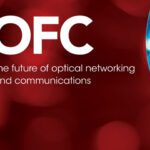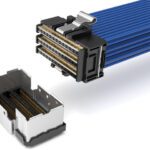End-to-End Communications with Advanced Fiber Technologies
For high-speed communication beyond the first few meters, optics is a field-proven, energy-efficient transport mechanism. This TE Connectivity white paper delves into optimizing end-to-end communications with advanced fiber optic technologies.
This white paper excerpt was contributed by TE Connectivity.
More Data = More Consumption
The emergence of faster data rates to keep pace with the demands for data poses a number of technical challenges. While this is not a new or radical thought, the radical conversation on how to combat these challenges — specifically when it comes to the resources, like energy — is imperative to fuel this data deluge. Among the problems that become apparent even at 10Gb/s is the power consumption of copper interconnect signals within systems — and the problem is compounded at 25Gb/s data rates. Power consumed by the networking equipment alone significantly contributes to the overall energy problem of data centers, which are estimated to consume 30 billion watts worldwide.
The energy usage of data centers is already staggeringly large and estimated to be more than 2% of total US electricity consumption. Networking equipment consumes about 50% of a typical data center’s energy. Air movement and cooling equipment consume about 37%, transformers and uninterruptible power supplies account for 10%, and lighting and other items take another 3%.
The US Department of Energy recognized the impact of massive data processing and storage many years ago. In addition to the recently updated Version 2.0 ENERGY STAR specification for computer servers that took effect on December 16, 2013, Version 1.0 ENERGY STAR specification for data center storage took effect on December 2, 2013. Purchasing ENERGY STAR-rated equipment should significantly lower a data center’s energy consumption and improve the bottom line by reducing energy costs. Acquiring an ENERGY STAR rating should help server and storage equipment suppliers differentiate and increase the sales of their products. More efficient data transmission can play a role in obtaining the ENERGY STAR rating.
With core networking doubling every 18 months or so, and server I/O density doubling approximately every 24 months, delaying the inevitable transition to higher-speed data transmission capability could prove costly for many companies.
Coolbit Optical Engine Technology
Advancing the capabilities of fiber optics to accommodate the demands for 25Gb/s and beyond is the challenge that has been met by TE’s advanced Coolbit optical engine. This engine satisfies high-density and high-bandwidth requirements while running at about two-thirds the power of conventional solutions.
More and Faster Data
“Big Data,” a term that encompasses many of today’s technology buzzwords including the Internet of Things (IoT), machine to machine (M2M) and wireless communication, cloud computing, and more, is driving the need for more bandwidth. But the demand for more bandwidth is nothing new; what could compel a transition to fiber optics for both intra- and intersystem high-speed communications that has been predicted for more than 20 years?
LightCounting, a market research firm focusing on high-speed interconnects, reported: “At 10 Gb/s signaling, the problems were manageable, but as the industry transitions to 25G signalizing, significant signal losses and issues are surfacing. As speeds increase to 25GHz, the number of signal-compensating electronics needed is skyrocketing along with costs.”
As a result, an emerging product segment has been created that allows system designers to embed optical transceiver technologies inside computer and communications systems. Embedding high-speed optical transceiver technologies, known as mid-board optics (MBO), onto traditional server line cards or switch fabrics allows system architects to achieve:
- Higher input/output densities
- Systems that are not bound by copper interconnect lengths
- More power-efficient systems
MBO inside systems mitigate the added electrical losses encountered at the 25Gb/s signaling rate. If comparing faceplate density, when optics move off the faceplate and onto the system’s printed circuit board, the system based on 400Gb/s CDFP active optical cable assemblies shows maximum pluggable I/O density. The version where the I/O is based upon optical connectivity would result in substantially higher electrical I/O density while eliminating the cooling problem on the faceplate.
Mid-board optics modules provide the key to eliminating the faceplate density problems and the attendant heat management problems. TE’s MBO module is a 12-channel transceiver capable of transmitting and receiving 300 Gb/s. The electrical interface is provided through a land grid array (LGA) socket on the optical module side and a ball grid array (BGA) on the host board, and allows modules to be placed on a one-inch grid. The high-speed inputs are AC-coupled to a floating input termination. On the Rx side, the incoming optical signal is converted to a current by the PIN diode. The output stage is current-mode-logic and provides 50 Ohm back terminations.
On a system level, the impact of optically enabled system design allows for high multi-terabit systems: horizontal line cards with 28 Tb/s of I/O connected to onboard MBOs, managed fiber solutions on the line cards via optical flex circuits, and an optical backplane capable of more than 900 Tb/s of interchassis interconnectivity.
Active optical cable assemblies (AOCs) embed the high-speed optics (like Coolbit optical engines) behind two transceiver ends and deliver an electrical interconnection to the other system electronics. This design enables very-high-speed and high-aggregate data rate links at costs significantly below those of separate transceivers and fibers. AOCs offer the benefits of optical with the ease-of-use of copper.
Faster and Denser Active Optical Cable Module
System-level thermal advantages take two forms. First, the lower power consumption needed for optical transmission (power/bit-meter) is the primary thermal advantage, a direct result of the Coolbit optical engines. Less power dissipation results in less power needed in the conversion to drive the optics and less heat that needs to be extracted by system cooling mechanisms. Second, the high-density packaging and low cross-section of optical fiber produces less obstruction to system cooling, so cooling schemes are more efficient compared to solutions that encounter airflow restriction with high-density copper cables.
Power consumption is critical to high-speed data transmission. For the same performance in terms of data transmission, lower power consumption reduces the cooling load level that end customers need to provide, which reduces their energy bills and overall expenses. Fiber optics solutions help minimize energy costs while maximizing high-speed data transmission.
To read this white paper in its entirety, click here.







